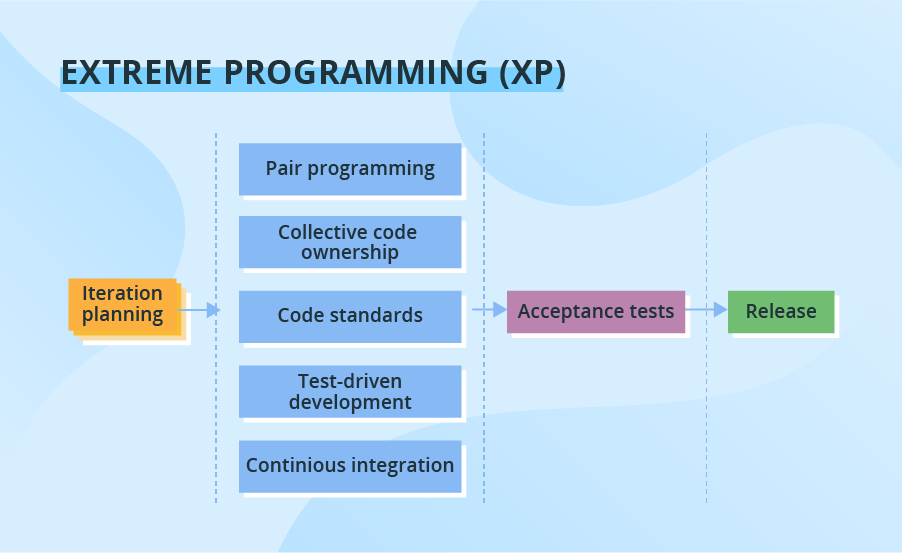In the ever-evolving landscape of software development, ensuring code high quality and reliability has become more important than ever. While projects grow within complexity, the standard approaches to development often struggle to keep up, leading to be able to issues with irritate management, maintainability, and even delivery timelines. Get into Extreme Programming (XP) and its key practice, Test-Driven Growth (TDD), a technique designed to boost code quality and even reliability. This write-up delves into typically the principles of TDD within XP, explores its benefits, plus discusses how that can revolutionize the development process.
Understanding Intense Programming
Extreme Programming (XP) is a great agile software development framework that stresses flexibility, collaboration, and even client satisfaction. It has been introduced by Kent Beck in the late 1990s as a response to the challenges encountered by development groups in rapidly altering environments. XP stimulates frequent releases in short development cycles, which often improves productivity and introduces checkpoints in which new customer needs can be adopted.
XP is constructed on a pair of core values, including communication, simplicity, comments, courage, and value. These values slowly move the practices that help make XP unique, such as pair programming, continuous integration, in addition to of course, Test-Driven Development.
The Function of Test-Driven Development in XP
Test-Driven Development (TDD) is definitely a cornerstone associated with XP, providing a methodized approach to computer software design and enhancement. TDD flips the traditional development procedure on its mind by writing tests before writing the particular code. This strategy may appear counterintuitive at first, but it lines up perfectly with XP’s principles of simpleness and feedback.
The TDD process could be broken along into three main steps, often known to as typically the «Red-Green-Refactor» cycle:
Reddish colored: Write a test with regard to the next bit of functionality you aim to implement. This test should at first fail as the operation does not but exist.
Green: Write down thier minimal amount regarding code necessary in order to make the check pass. The emphasis this is on composing just enough code in order to satisfy test, with out worrying about typically the overall architecture or even optimization.
Refactor: As soon as the test is passing, review typically the code and refactor it to enhance it is structure and get rid of any redundancy, most while ensuring that typically the test still goes.
This cycle is usually repeated for every new feature or perhaps bit of functionality, ensuring that the codebase is continually analyzed and refined.
Advantages of Test-Driven Development
1. Improved Computer code Quality
One of the most considerable benefits of TDD could be the improvement within code quality. By writing tests very first, developers are compelled to consider the needs and edge cases of their program code from the outset. This potential clients to more solid, error-resistant code. The constant testing and refactoring inherent throughout TDD also mean that code is usually continually refined and optimized, reducing the possibilities of bugs and the code easier in order to maintain.
2. Enhanced Dependability
Reliability is a critical factor of any computer software, particularly those within production environments. TDD helps ensure that news and changes never introduce pests or regressions directly into the codebase. Due to the fact each part of features is tested ahead of it’s even integrated, developers could be self-confident that their code works as meant. Additionally, the selection of automated assessments acts as the safety net, getting any issues that might arise during future development.
several. Faster Development Period
At first, TDD may possibly seem to gradual down development, because developers are necessary to write checks before writing typically the actual code. On the other hand, in practice, TDD often leads to faster development periods. The reason regarding this is certainly that TDD reduces the period spent debugging and even fixing issues after in the method. Since tests will be written first, several bugs are captured in early stages, before they can propagate by way of the codebase. Additionally, the discipline involving writing small, incremental pieces of computer code which are immediately tested and refined will help maintain a steady development pace, decreasing the need for extensive rework.
5. Better Collaboration in addition to Connection
In 7, collaboration and interaction are key. TDD supports these ideals by giving a obvious, shared knowledge of precisely what the code is supposed to do. The tests themselves serve because living documentation that will both developers in addition to non-developers (like product owners) can know. This transparency helps better communication inside the team plus with stakeholders, ensuring that everyone is in the same web page regarding the project’s goals and improvement.
5. Reduced Technical Credit card debt
Technical debt refers to the cost involving additional rework triggered by choosing a fairly easy, limited solution right now instead of employing a better strategy that would much more. TDD helps lessen technical debt simply by encouraging developers to publish clean, well-structured signal from the commencing. The regular refactoring process also ensures that the codebase is still clean and maintainable, reducing the likelihood of accumulating technological debt over moment.
Challenges and Concerns
While TDD presents numerous benefits, this is not with out its challenges. For starters, TDD requires some sort of significant mindset move for developers who else are used to publishing code first plus testing later. This kind of shift can be difficult in order to adopt, particularly inside teams with established workflows.
Additionally, TDD can be challenging in scenarios in which the requirements are usually not well understood or are issue to frequent alter. Writing more info here with regard to features that are very likely to change can lead to wasted effort and frustration. However, these types of challenges can end up being mitigated with experience and by cultivating a team tradition that values testing and quality.
One more consideration is the particular likelihood of over-testing. Whilst having a comprehensive analyze suite is normally advantageous, it’s vital that you reach a balance in between thoroughness and effectiveness. Writing too many tests, especially for unimportant or low-risk functionality, can lead in order to an overly complicated and difficult-to-maintain test suite.
Best Practices for Implementing TDD in XP
In order to successfully implement TDD within an XP framework, consider typically the following best methods:
Start Small: Begin by applying TDD into a small part regarding building your shed or a new specific feature. This particular allows the group for being familiar along with the process in addition to understand its rewards without overwhelming these people.
Focus on Test Coverage: Ensure that will your tests cover up all critical features and edge cases. However, avoid over-testing by focusing upon high-risk areas and even core functionality.
Refactor Regularly: Make refactoring a normal part regarding your development process. This keeps the codebase spending minimizes technical debt.
Collaborate: Encourage collaboration involving developers, testers, and even product owners if writing tests. This specific ensures that later a clear understanding of the needs and that the tests accurately reflect typically the desired functionality.
Employ Continuous Integration: Integrate TDD with continuous integration (CI) tools to automatically manage tests whenever new code is fully commited. This provides immediate feedback and assists catch issues early on in the development method.
Buy Training: Offer training and solutions to help your staff understand and take up TDD practices. This kind of might include training courses, pairing sessions, or even code reviews centered on TDD.
Realization
Test-Driven Development in Extreme Programming is actually a powerful methodology regarding ensuring code good quality and reliability. Simply by writing tests prior to writing code, builders can produce even more robust, maintainable, and even reliable software. Although TDD requires a switch in mindset and approach, the benefits that offers in phrases of improved signal quality, faster enhancement cycles, and reduced technical debt create it a worthwhile investment for any development team. Any time implemented effectively, TDD can revolutionize typically the software development method, leading to far better outcomes for equally developers and their own clients.







Deja una respuesta